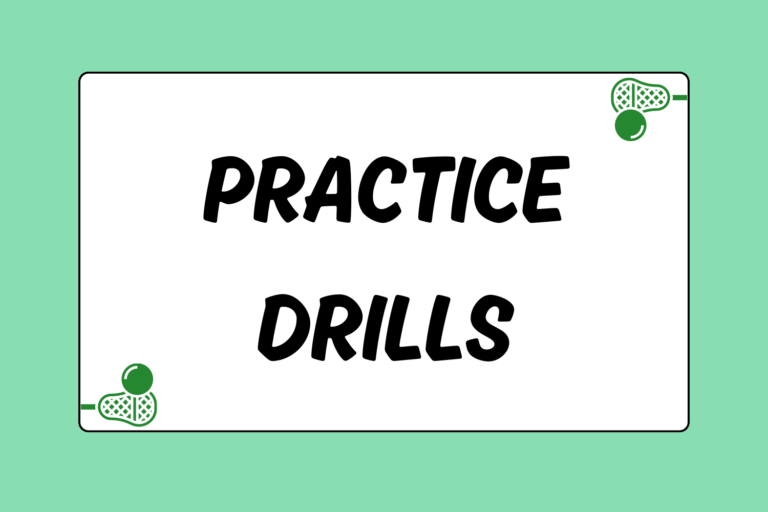Wing play on face-offs can complement a dominant FOGO on your team or counteract one from the opposing team. Strategically positioning your wing-men allows you to create and prevent fast breaks, determine defensive matchups before the whistle has blown, or put your team in position to control loose balls and gain possession. This area of play is often overlooked in the grand scheme of things, but it can really be a determining factor in whether your team wins or loses a close contest.
This guide will examine different situations that occur on face-offs, as well as the who, where, when, and how, when it comes to positioning your wing players for face-offs.
Who Should Play on the Wings
Most teams like to put a Long Stick Midfielder (LSM) on the wing for face-offs. On the opposite wing they will put a short stick midfielder who is adept at picking up ground balls and playing hard defense. The players on the wings don’t necessarily have to be midfielders that normally play together on a line. Your first priority as a team should be securing possession of the ground ball, and if the team can’t do that, matchups and quickly getting into the defensive set become the main concern.
The LSM playing on the wing will ideally be your team’s best ground ball and transition player at that position. The LSM’s first responsibility is to go after ground balls and find a short stick (preferably an attackman) to pass the ball to. Should the opportunity present itself, the LSM can turn up field and push towards the opponent’s cage and look to create a fast break. He should take a lane down the middle of the field, using as direct a route to the goal as possible.
At the very least, the players on the wings need to be reliable ground ball guys and decent defenders. If you can’t win the ground ball, you’re going to have to defend right away, so don’t get caught with shoddy defenders out there who are likely to get beat quickly in transition or in the settled defense.
Creating Fast Breaks
Many transition scoring chances come as a result of face-off wins. A face-off guy who can win the ball forward and push cage is one way to get quick scoring chances off a face-off. The wing defenders will immediately be drawn towards the ball, leaving one or both of your wing players open on a run into the offensive zone, where your team can create a 4-on-3, 5-on-3, or 5-on-4 break.
Another way to initiate transition off face-offs requires a very reliable FOGO who can win the ball backwards to himself. Have your short stick on the wing line up the full 10 yards into the offensive half, and then drift up field on the whistle, as the opponent lined up adjacent to him runs into the middle to chase the ball. This strategy requires the FOGO to quickly look up field to pass to the short stick drifting towards the restraining box. It should be noted that your LSM will have the added responsibility of playing back towards your defensive end to prevent a quick transition chance for the opponents, should they win the draw or force a quick turnover.
Amazingly True Story
Duke won its first NCAA lacrosse championship in the 2010 title game just five seconds into overtime on a faceoff win and subsequent fast break goal by C.J. Costabile, an LSM. Costabile is a rare long pole who actually takes draws, and won the draw to bust down into the offensive zone and rip a shot from eight yards out to win the title for the Blue Devils. Costabile was able to penetrate the Notre Dame defense because ND neglected to send anyone back from the wings to stop the break, as their FOGO had been controlling the draws all day. A player sent back to stop the break could perhaps have changed the outcome of the game in the Irish’s favor.
Preventing Fast Breaks
Another big part of wing play is preventing fast breaks off a faceoff. This is relatively simple, but sometimes an LSM can get lazy, or a faceoff guy might be especially good at popping the ball forward and evading wing-men running hard to deny transition.
The best way to combat transition chances is to have your LSM line up as far as possible into the defensive half of the field on the wing line. As the whistle blows, the LSM should charge hard back towards your defensive restraining box and get in good position to force a ball-carrier to either side, rather than letting him run down the middle.
A tactic seen less frequently is to play two long sticks on the wings. Have one of your close defensemen bump up to the wing, and send a short stick down low to guard an attackman temporarily. One of the poles, normally the LSM, will have the responsibility of cutting the break. The other pole should aggressively attack the ball or ball carrier. If your team comes up with the ball, the second pole will run back to the defensive half and the short stick will bump back up, either entering the offensive half, or quickly busting off to substitute.
Causing Turnovers
Most FOGOs are FOGOs for a reason: they can’t handle the ball, and thus can’t play offense adeptly. However, you can easily use this fact to your advantage to cause quick turnovers in the middle of the field.
If your team is in need of a forced turnover and quick possession on a faceoff, the best tactic is to have both wing players aggressively attack the FOGO after he has picked up the ball. Often, when a FOGO scoops up the ball and turns to run up field, his LSM will begin to run off, and the short stick on the other side will turn his head to run, as well. This is the perfect time to catch him by surprise. Instruct your defensemen to shut off their attackmen while the LSM and short stick go to work on the FOGO, double-teaming, throwing hard checks, and not allowing him space to get a pass off.
The main key to forcing a turnover is to immediately apply hard pressure on the ball carrier. If the opponent’s LSM picks the ball up, this is also a good time to pressure and double-team, as LSMs are not used to dealing with a double and needing to find help quickly.
Winning with the Wings
If your wing players have been well coached and know what to do and when to do it, they can have a huge effect on the outcome of the game over the course of 48 minutes. Forcing enough turnovers, creating offensive transition, and preventing opponents’ fast breaks can significantly affect the scoring on both sides through the duration of a game. Have your wing-men well prepared to play intelligently and aggressively, and you’ll see results right away.





